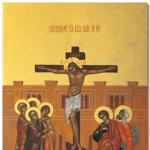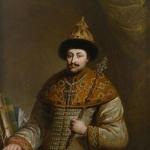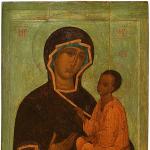Types of overhead line supports
In the production of metal structures for power lines The following types of overhead line supports are distinguished:
intermediate power line supports,
power line anchor supports ,
power line corner supports and special metal products for power lines. The types of overhead power line structures that are the most numerous on all power lines are intermediate supports, which are designed to support wires on straight sections of the route. All high-voltage wires are attached to power line cross-arms through supporting garlands of insulators and other structural elements of overhead power lines. In normal mode, overhead line supports of this type take loads from the weight of adjacent half-spans of wires and cables, the weight of insulators, linear reinforcement and individual elements of the supports, as well as wind loads caused by wind pressure on the wires, cables and the metal structure of the power line itself. In emergency mode, the structures of intermediate power transmission line supports must withstand the stresses that arise when one wire or cable breaks.
Distance between two adjacent intermediate supports of overhead lines called the intermediate span. Overhead line corner supports can be intermediate or anchor. Intermediate corner elements of power transmission lines are usually used at small angles of rotation of the route (up to 20°). Anchor or intermediate corner elements of power transmission lines are installed in sections of the line route where its direction changes. Intermediate corner supports of overhead lines in normal mode, in addition to the loads acting on the usual intermediate elements of power lines, perceive the total forces from the tension of wires and cables in adjacent spans, applied at the points of their suspension along the bisector of the angle of rotation of the power line. The number of anchor corner supports of overhead lines is usually a small percentage of the total number on the line (10... 15%). Their use is determined by the installation conditions of the lines, the requirements for the intersections of lines with various objects, natural obstacles, i.e. they are used, for example, in mountainous areas, and also when intermediate corner elements do not provide the required reliability.
Are used anchor corner supports and as terminal wires from which the line wires go to the switchgear of a substation or station. On lines running in populated areas, the number of power line anchor corner elements also increases. The overhead line wires are secured through tension garlands of insulators. In normal mode for these power line supports , in addition to the loads indicated for the intermediate elements of the molding, the difference in tension along the wires and cables in adjacent spans and the resultant of the tension forces along the wires and cables act. Typically, all anchor-type supports are installed so that the resultant of the gravitational forces is directed along the axis of the support traverse. In emergency mode, power line anchor posts must withstand the break of two wires or cables. Distance between two adjacent power line anchor supports called an anchor span. Branch elements of power transmission lines are designed to make branches from main overhead lines when it is necessary to supply power to consumers located at some distance from the route. Cross elements are used to cross overhead line wires in two directions. Overhead line end posts are installed at the beginning and end of the overhead line. They perceive forces directed along the line created by the normal one-way tension of the wires. For overhead lines, power line anchor supports are also used, which have increased strength and a more complex design compared to the types of stands listed above. For overhead lines with voltage up to 1 kV, reinforced concrete racks are mainly used.
What types of power line supports are there? Classification of varieties
They are classified according to the method of fixation in the ground:
Overhead line supports installed directly into the ground - Power line supports installed on foundations Types of power line supports by design:
Free-standing power transmission towers - Posts with guys
Power line supports are classified according to the number of circuits:
Single-chain - Double-chain - Multi-chain
Unified power line supports
Based on many years of practice in the construction, design and operation of overhead lines, the most appropriate and economical types and designs of supports for the corresponding climatic and geographical regions are determined and their unification is carried out.
Designation of power line supports
For metal and reinforced concrete supports of 10 - 330 kV overhead lines, the following designation system has been adopted.
P, PS - intermediate supports
PVS - intermediate supports with internal connections
PU, PUS - intermediate corner
PP - intermediate transition
U, US - anchor-angular
K, KS - end
B - reinforced concrete
M - Polyhedral
How are overhead line supports marked?
The numbers after the letters in the marking indicate the voltage class. The presence of the letter “t” indicates a cable stand with two cables. The number separated by a hyphen in the marking of overhead line supports indicates the number of circuits: odd, for example, one in the numbering of a power line support is a single-circuit line, an even number in the numbering is two and multi-circuit. The number separated by “+” in the numbering means the height of the attachment to the base support (applicable to metal ones).
For example, symbols of overhead line supports: U110-2+14 - Metal anchor-corner double-chain support with a stand of 14 meters PM220-1 - Intermediate metal multifaceted single-chain support U220-2t - Metal anchor-corner double-chain support with two cables PB110-4 - Intermediate reinforced concrete double-chain support
Overhead power lines. Support structures.
Supports and foundations for overhead power lines with voltage 35-110 kV have significant specific gravity both in terms of material consumption and in cost terms. Suffice it to say that the cost of installed support structures on these overhead lines is, as a rule, 60-70% of the total cost of constructing overhead power lines. For lines located on industrial enterprises and immediately adjacent territories, this percentage may be even higher.
Overhead line supports are designed to support line wires at a certain distance from the ground, ensuring the safety of people and reliable operation of the line.
Overhead power line supports are divided into anchor and intermediate. The supports of these two groups differ in the way the wires are suspended.
Anchor supports completely absorb the tension of wires and cables in spans adjacent to the support, i.e. used for tensioning wires. The wires are suspended from these supports using hanging garlands. Anchor-type supports can be of normal or lightweight design. Anchor supports are much more complex and more expensive than intermediate ones and therefore their number on each line should be minimal.
Intermediate supports do not perceive the tension of the wires or perceive it partially. The wires are suspended on intermediate supports using supporting garlands of insulators, Fig. 1.
Rice. 1. Scheme of the anchor span of the overhead line and the span of the intersection with the railway
On the basis of anchor supports can be carried out terminal and transposition supports. Intermediate and anchor supports can be straight and angular.
End anchor supports installed at the line exiting the power plant or at the approaches to the substation are in the worst conditions. These supports experience one-sided pull of all wires from the line side, since the pull from the substation portal is insignificant.
Intermediate lines poles are installed on straight sections of overhead power lines to support the wires. An intermediate support is cheaper and easier to manufacture than an anchor support, since under normal conditions it does not experience forces along the line. Intermediate supports make up at least 80-90% of the total number of overhead line supports.
Corner supports are installed at the turning points of the line. At line rotation angles of up to 20°, anchor-type corner supports are used. When the angle of rotation of the power line is more than 20 o - intermediate corner supports.
Used on overhead power lines special supports following types: transpositional– to change the order of wires on supports; branch– to make branches from the main line; transitional– for crossing rivers, gorges, etc.
Transposition is used on lines with a voltage of 110 kV and above with a length of more than 100 km in order to make the capacitance and inductance of all three phases of the overhead power line chain the same. At the same time, the relative position of the wires in relation to each other on the supports is successively changed. However, this triple movement of wires is called a transposition cycle. The line is divided into three sections (steps), in which each of the three wires occupies all three possible positions, Fig. 2.

Rice. 2. Transposition cycle of single-circuit line wires
Depending on the number of chains suspended from the supports, the supports may be single-chain and double-chain. The wires are located on single-circuit lines horizontally or in a triangle, on double-circuit supports - reverse tree or hexagon. The most common locations of wires on supports are shown schematically in Fig. 3.

Rice. 3. The most common locations of wires and cables on supports:
a – location along the vertices of the triangle; b - horizontal arrangement; c – reverse tree arrangement
The possible location of lightning protection cables is also indicated there. The arrangement of wires along the vertices of the triangle (Fig. 3, a) is widespread on lines up to 20-35 kV and on lines with metal and reinforced concrete supports with a voltage of 35-330 kV.
The horizontal arrangement of wires is used on 35 kV and 110 kV lines on wooden supports and on higher voltage lines on other supports. For double-chain supports, it is more convenient from an installation point of view to arrange the wires in a “reverse tree” type, but it increases the weight of the supports and requires the suspension of two protective cables.
Wooden supports were widely used on overhead power lines up to 110 kV inclusive. The most common are pine supports and somewhat less common are larch supports. The advantages of these supports are their low cost (if local wood is available) and ease of manufacture. The main disadvantage is wood rotting, especially intense at the point of contact of the support with the soil.
Metal supports made of special grades of steel for lines of 35 kV and above, they require a large amount of metal. Individual elements connected by welding or bolts. To prevent oxidation and corrosion, the surface of metal supports is galvanized or periodically painted with special paints. However, they have high mechanical strength and a long service life. Install metal supports on reinforced concrete foundations. These supports, according to the design of the support body, can be classified into two main schemes - tower or single-post, rice. 4, and portal, rice. 5.a, according to the method of fastening to the foundations - k free-standing supports, fig. 4 and 6, and guyed supports, rice. 5.a, b, c.
On metal supports with a height of 50 m or more, stairs with guardrails reaching the top of the support must be installed. In this case, each section of supports must have platforms with fences.

Rice. 4. Intermediate metal support for single circuit line:
1 – wires; 2 – insulators; 3 – lightning protection cable; 4 – cable support; 5 – support traverses; 6 – support stand; 7 – support foundation

Rice. 5. Metal supports:
a) – intermediate single-circuit on guy wires 500 kV; b) – intermediate V-shaped 1150 kV; c) – intermediate support of 1500 kV DC overhead line; d) – elements of spatial lattice structures

Rice. 6. Metal free-standing double chain supports:
a) – intermediate 220 kV; b) – anchor corner 110 kV
Reinforced concrete supports are carried out for lines of all voltages up to 500 kV. To ensure the required density of concrete, vibration compaction and centrifugation are used. Vibration compaction is carried out using various vibrators. Centrifugation provides very good compaction of concrete and requires special machines - centrifuges. On overhead power lines of 110 kV and above, the support posts and traverses of the portal supports are centrifuged pipes, conical or cylindrical. Reinforced concrete supports are more durable than wooden ones, there is no corrosion of parts, they are easy to operate and therefore are widely used. They have a lower cost, but have greater mass and relative fragility of the concrete surface, Fig. 7.

Rice. 7. Intermediate reinforced concrete free-standing single-circuit
supports: a) – with pin insulators 6-10 kV; b) – 35 kV;
c) – 110 kV; d) – 220 kV
Crossbeams of single-column reinforced concrete supports are galvanized metal.
The service life of reinforced concrete and metal galvanized or periodically painted supports is long and reaches 50 years or more.
Designation of overhead line supports
Designation of supports.
For overhead line supports of 35 kV and above, as a rule, the following notation system is used. The number in front letter designation indicates the number of posts that make up the support. If the support designation contains the letter B, this indicates that the support is reinforced concrete, D is wooden, M is multifaceted metal, the absence of these letters means that the support is metal lattice type. In addition, the designation of supports includes letters indicating the type of supports (see table below). The numbers 35, 110, 150, 220, etc., following the letters, indicate the voltage of the overhead line, and the number following them after the hyphen is the standard size of the supports (odd - for single-circuit supports and even - for double-circuit supports). If there is a letter T after the standard size of the support, this means that the support has a cable support. The numbers following the standard size of the support after the hyphen or the “+” sign indicate the size of the additional support section.
Table - Designation of supports
| Designation | Decoding |
| P | Intermediate support. |
| TO | End support. |
| A | Anchor support. |
| ABOUT | Branch support. |
| WITH | Special support. For example, US110-3 stands for: metal anchor-corner single-circuit special (with horizontal wires) support for 110 kV overhead lines; US110-5 stands for: metal anchor-corner single-circuit special (for urban development - with a reduced base and increased suspension height) support for 110 kV overhead lines. |
| U | Corner support. For example, U110-2+14 stands for: a metal anchor-corner double-circuit support with a stand 14 m high for a 110 kV overhead line. |
| P | Transition support. For example, PPM110-2 stands for: intermediate metal multifaceted transitional double-circuit support for 110 kV overhead lines. |
| B | Reinforced concrete support. For example, PB110-1T stands for: intermediate single-circuit single-column reinforced concrete support with cable resistant for 110 kV overhead line. |
| M | Multifaceted support. For example, PM220-1 stands for this: an intermediate metal multifaceted single-circuit support for a 220 kV overhead line. |
| D | Wooden support. For example, UD220-1 stands for: wooden anchor-corner single-circuit support for 220 kV overhead line. |
| T | Support with cable support. For example, U35-2T+5 stands for: a metal anchor-corner double-circuit support with a cable-resistant and 5 m high stand for a 35 kV overhead line. |
| IN | Support with internal connections. For example, 2PM500-1V stands for this: an intermediate metal multifaceted single-circuit support with internal connections for a 500 kV overhead line, consisting of two racks. |
Types and designations of supports
On overhead lines, supports made of various materials can be used.
For overhead lines, the following types of supports should be used:
1) intermediate, installed on straight sections of the overhead line route. In normal operating modes, these supports should not absorb forces directed along the overhead line;
2) anchor, installed to limit the anchor span, as well as in places where the number, grades and cross-sections of overhead line wires change. In normal operating conditions, these supports must absorb forces from the difference in tension of the wires directed along the overhead line;
3) angular, installed in places where the direction of the overhead line route changes. Under normal operating conditions, these supports must absorb the resulting load from the tension of the wires of adjacent spans. Corner supports can be intermediate or anchor type;
4) end ones, installed at the beginning and end of overhead lines, as well as in places limiting cable inserts. They are anchor-type supports and must withstand the one-sided pull of all wires in normal operating modes of overhead lines.
Depending on the number of chains suspended on them, supports are divided into single-chain, double-chain and multi-chain.
The supports can be free-standing or with guy wires.
Intermediate supports can be of flexible or rigid design; anchor supports must be rigid. It is allowed to use anchor supports of flexible design for overhead lines up to 35 kV.
The supports on which branches from overhead lines are made are called branch supports; supports on which the intersection of overhead lines of different directions or the intersection of overhead lines with engineering structures are carried out are cross ones. These supports can be of all specified types.
The support structures must provide the ability to install:
- lamps street lighting all types;
- cable terminations;
- protective devices;
- sectioning and switching devices;
- cabinets and panels for connecting electrical receivers.
Types of supports
P - intermediate;
PP - transitional intermediate:
UP - angular intermediate:
A - anchor;
PA - transitional anchor;
AK - anchor end:
K - end:
UA - corner anchor;
PUA - transitional corner anchor;
AO - anchor branch;
POA - transitional anchor branch;
O - branch.
Nomenclature of reinforced concrete supports for 10 kV power lines
Support code |
Number of racks per support |
Rack code |
Stand height, m |
Height to the lower traverse, m |
Volume of reinforced concrete, m |
Weight of metal structures, kg |
SV105-3.5; SV105 SV105-3.5; SV105 SV105-3.5; SV105 SV105-3.5; SV105 SV105-3.5; SV105 SV105-3.5; SV105 SV105-3.5; SV105 SV105-3.5; SV105 SV105-3.5; SV105 SV105-3.5; SV105 SV105-3.5; SV105 SV105-3.5; SV105 SV105-3.5; SV105 SV105-3.5; SV105 SV105-3.5; SV105 SV105-3.5; SV105 SV105-3.5; SV105 SV105-3.5; SV105 SV105-3.5; SV105 SV105-3.5; SV105 SV105-3.5; SV105 SV105-3.5; SV105 SV105-3.5; SV105 SV105-3.5; SV105 SV105-3.5; SV105 SV105-3.5; SV105 SV105-3.5; SV105 SV105-3.5; SV105 SV105-3.5; SV105 SV105-3.5; SV105 SV105-3.5; SV105 SV105-3.5; SV105 |
STATE STANDARD OF THE USSR UNION
UNIFIED SYSTEM OF TECHNOLOGICAL DOCUMENTATION
SUPPORTS, CLAMPS
AND INSTALLATION DEVICES.
GRAPHICAL SYMBOLS
GOST 3.1107-81
(C.T.CMEA 1803 -7 9)
STATE STANDARD OF THE USSR UNION
|
Unified system of technological documentation SUPPORTS, CLAMPS Unified system for technological documentation. |
GOST (C.T.CMEA 1803 -7 9) In return |
from 01.07.82
1. This standard establishes graphic designations of supports, clamps and installation devices used in technological documentation. The standard fully complies with ST SEV 1803-7 9. 2. To depict the designation of supports, clamps and installation devices, a solid thin line should be used in accordance with GOST 2.303-68. 3. Designations of supports (conditional) are given in table. 1.
Table 1
|
On and change support |
Support symbol in views |
||
|
front and back |
|||
| 1. Fixed | |||
| 2. Movable |
|
||
| 3. Floating |
|
||
| 4.Adjustable |
|
||
table 2
|
Name of clamp |
Clamp designation in views |
||
|
front, back |
|||
| 1. Single | |||
| 2. Double |
|
|
|

Table of persons 3
|
Name of installation device |
The installation device is indicated in the views |
||
|
front, back, top x bottom |
|||
| 1. The center is stationary |
|
Without designation |
Without designation |
| 2. Center rotating |
|
||
| 3. Center floating |
|
||
| 4. Cylindrical mandrel |
|
||
| 5. Ball mandrel (roller) |
|
||
| 6. Drive chuck | |||
Table 4
|
Name of working surface shape |
Designation of the shape of the working surface on all sides |
| 1. Flat |
|
| 2. Spherical |
|
| 3. Cylindrical (ball) | |
| 4. Pr and zimatic | |
| 5. Conical | |
| 6. Rhombic |
|
| 7. Triangular |
Table 5
15. The designation of the types of clamping devices is applied to the left of the designation of the clamps (reference appendices 1 and 2). Note. For g and drop-plastic mandrels, it is allowed to use the designation e - . 16. The number of points of application of the clamping force to the product, if necessary, should be written to the right of the clamp designation (reference appendix 2, item 3). 17. On diagrams that have several projections, it is allowed on separate projections not to indicate the designations of supports, clamps and installation devices relative to the product, if their position is clearly determined on one projection (reference appendix 2, item 2). 18. On the diagrams, it is allowed to replace several designations of supports of the same name on each view with one, indicating their number (reference appendix 2, item 2). 19. Deviations from the dimensions of the graphic symbols indicated in the table are allowed. 1 - 4 and in the drawing.ANNEX 1
Information
Examples of marking supports, clamps and installation devices on diagrams
|
Name |
Examples of markings for supports, clamps and installation of eyepiece devices |
| 1. Fixed center (smooth) |
|
| 2. Center grooved |
|
| 3. Center floating |
|
| 4. Center rotating |
|
| 5. Reverse rotating center with grooved surface |
|
| 6. Drive chuck |
|
| 7. Movable rest |



















